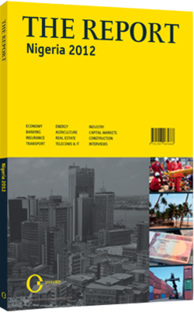Glass half full: Competition in the market for beer heats up
It is not Africa’s biggest market, but it is promising. According to Russian investment bank Renaissance Capital, Nigerian beer consumption in 2011 totalled around 19.5m hectolitres. At around 12 litres per head, that is a lot lower than the global average of 27 litres, and far below South African levels of 63 litres. But growth has been brisk: Renaissance puts the compound annual growth rate at 9.1% in the previous decade and, in 2011, forecast 13% for the coming one.
POTENTIAL GROWTH: Although the influence of Islam is obviously a factor, low beer consumption does not really reflect an aversion to alcohol. According to World Health Organisation data for 2005, Nigeria had the highest annual consumption rate in sub-Saharan Africa, at 12.3 litres a head, but 94% of this was consumed in the informal sector, as home brews of various sorts. This fact suggests potential: more affordable beer could encourage drinkers to switch from home-made alcohol to mass-produced beverages.
In terms of players, it is a battle of the internationals. The market leader is Heineken International, via majority holdings in two groupings, Nigerian Breweries and the much smaller Consolidated Breweries, the latter acquired in 2005. Also on the market is Diageo, via its affiliate Guinness Nigeria, predictably dominant on the stout market, although very far behind Heineken on the lager market, where its traditional offering has been the Harp brand. Finally, there is a much more recent entrant, SABM iller, a UK-based firm with strong South African roots. Entering the market in 2009 with purchases of majority stakes in Port Harcourt and Ibadan breweries, it has yet to gain very large market share but it has certainly energised its competitors.
KNOW YOUR CUSTOMERS: In terms of brands and tastes, however, the market is very local. Malt beers – as well as non-alcoholic malt drinks – are favoured and included in everyone’s product lines. SABM iller appeals to home-brew tastes as well as providing reasonable prices by using cassava as an ingredient. Around as long as anyone can remember, Guinness is regarded more as a Nigerian drink than an Irish one. And it is popular: in 2008 Nigeria overtook Ireland in absolute terms as the world’s second-largest Guinness-quaffing country, and Renaissance has predicted that it might overtake the UK as the largest by 2014. As to Heineken’s own brand, it is bottled and sold locally, having been relaunched in 1998, but the really distinctive premium lager brands of Nigerian Breweries are Gulden (launched 1970) and Star (which has been around since 1949).
BROAD PRODUCT LINES: As to non-premium beers, there has been much activity in this segment recently.
With SABM iller expected – correctly – to concentrate on making progress on the lower end of the market, Heineken’s response in 2011 was to purchase five regional breweries: Sona Systems in Ogun State, Life Breweries in Anambra State, Champion Breweries in Akwa-Ibom, International Beer and Beverage Industries in Kaduna, and the Benue Brewery in Benue State.
Much of the attention has focused on the refining of old brands rather than outright rebranding or capacity conversion. In July 2012, for instance, there was a relaunch of Sona’s somewhat obscure Goldberg brand, billed as the answer for those who wanted “high quality” but could not afford Heineken, Star or Gulder.
Champion underwent a similar exercise at roughly the same time, as had Life’s 29-year-old Continental Lager brand in March 2012. And Guinness has gone one better: in April 2012 it relaunched Dubic Lager Beer, popular in Abia State before it was discontinued in 1998.
It is promising to be quite a battle. With a market share of around two-thirds even before its acquisitions, Heineken has a lot of capacity on its hands, although 29% year-on-year sales growth in the first quarter of 2012 for Nigerian Breweries suggests that it is doing fine. In March 2012, Guinness Nigeria announced plans for $336m worth of expansion at its breweries in Lagos and Benin City. And SABM iller is planning a $100m brewery at Onitsha, with start-up targeted in September 2012. It is to be hoped for the brewers’ sake that Nigerians prove as thirsty as analysts have predicted.
You have reached the limit of premium articles you can view for free.
Choose from the options below to purchase print or digital editions of our Reports. You can also purchase a website subscription giving you unlimited access to all of our Reports online for 12 months.
If you have already purchased this Report or have a website subscription, please login to continue.

